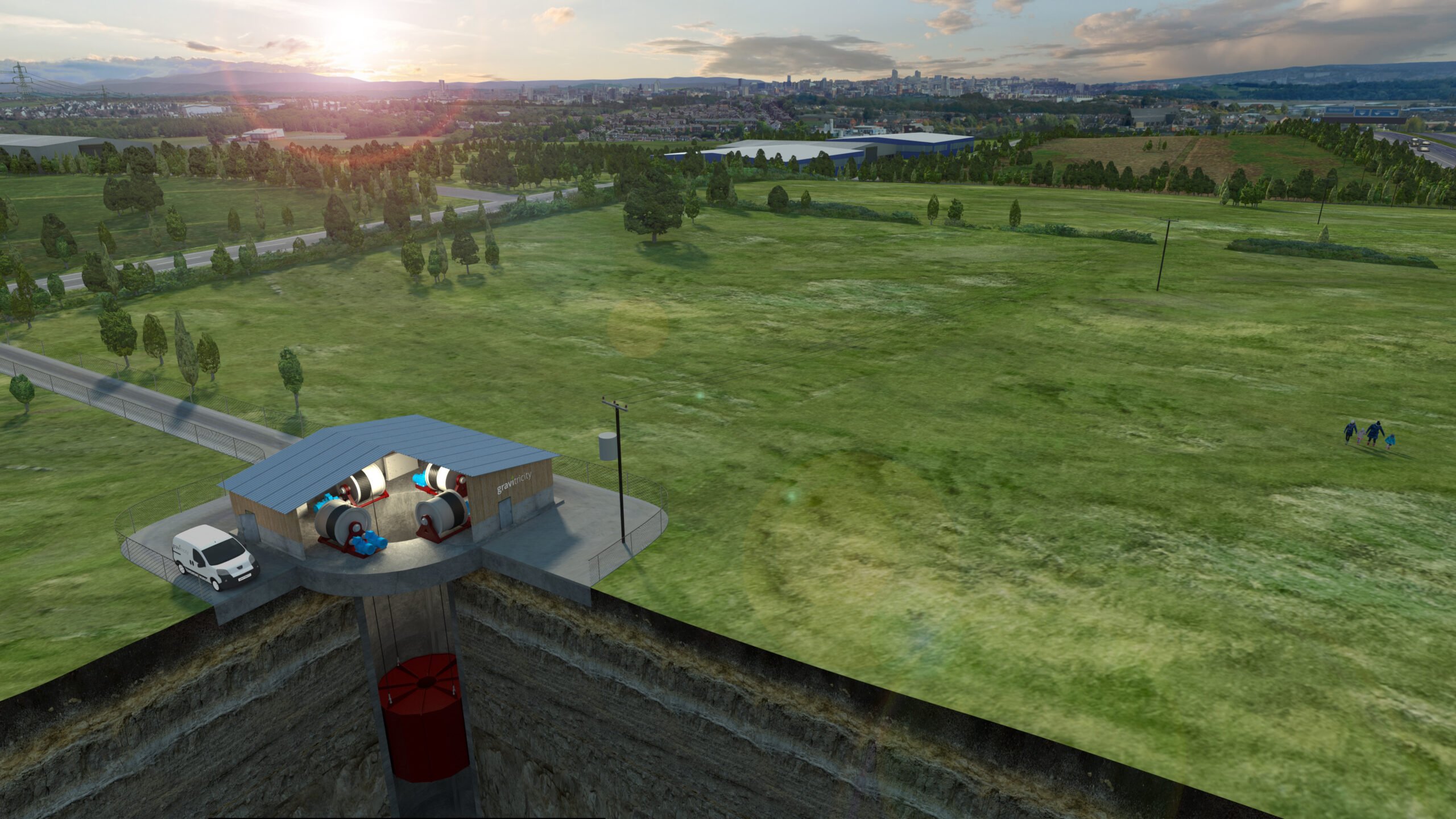
A UK-based company has received funding to explore potential sites in India for a demonstration project of its proprietary gravity energy storage technology.
Gravitricity’s technology uses large weights suspended in deep underground shafts to store and release kinetic energy, by lifting and lowering them on a system of pulleys.
Enjoy 12 months of exclusive analysis
- Regular insight and analysis of the industry’s biggest developments
- In-depth interviews with the industry’s leading figures
- Annual digital subscription to the PV Tech Power journal
- Discounts on Solar Media’s portfolio of events, in-person and virtual
By using underground spaces that already exist, like disused mine shafts, the company believes it can achieve a low cost of storage for either high power short duration applications or longer duration energy-heavy applications, without degradation over a 50-year lifetime.
At full scale, that could mean 800 metre lifts and drops for a total 12,000 tonnes of weights.
The company has built a 250kW functioning demonstration project in Scotland, where it is headquartered, and is exploring opportunities elsewhere, including a site in Czechia.
Gravitricity announced last week that it has secured £194,000 (US$233,800) funding from the UK’s government towards finding a suitable demonstration site in India.
Over the next 12 months, Gravitricity and local partner Panitek Power will identify a shortlist of potential demonstration scheme sites. That will include assessing the availability of local supply chain firms capable of providing equipment and components.
The money for the study is coming via national innovation agency Innovate UK, under a funding opportunity through its Energy Catapult accelerator programme. Innovate UK is working with a UK government fund that will invest up to £20 million in total in energy access programmes for Sub-Saharan Africa, South Asia or the Indo-Pacific regions.
As regular readers of this site and PV Tech will know, India is targeting a massive deployment of renewable energy, which is already well underway. More than 150GW of solar and wind have been installed, as the country targets 500GW of non-fossil fuel generation by 2030.
That is leading to a growing recognition of the need for energy storage, with the government of India keen to support the technologies. This and interest from private companies from home and abroad has largely been focused on lithium-ion battery storage to date.
However, as with other countries, there is likely to also be a desire to diversify the energy storage resource base in India, particularly as lithium battery supply chains are constrained by the huge amount of demand for electric vehicles (EVs) and dependency on imports from abroad, mostly from China.
Gravitricity said its mechanical energy storage technology could be well-suited to India’s needs.
“India has very few fossil fuel resources and is committed to adopting renewables to fuel its economic growth. Solar power is extremely cheap in such a sunny country but brings with it a need for energy storage to meet peak morning and evening demand, both of which typically occur during the hours of darkness,” Gravitricity project development manager Chris Yendell said.
“With the introduction of renewable energy generation at this scale, new flexible storage services will be essential to ensure the grid continues to operate in a stable manner. Gravitricity’s versatile technology is ideally placed to deliver the balancing services required to achieve this stability.”
Yendell added that the technology is “relatively simple”.
“It doesn’t rely on any rare earth metals, and has a very long lifespan, meaning it can be manufactured and deployed locally alongside vast amounts of new grid infrastructure which will also be required to meet the rapid growth in demand.”
Panitek Power’s chief commercial officer Parag Vyas said it made sense for many parts of India which have little or no access to the grid “to integrate energy storage within their evolving infrastructure to cope with intermittent generation” from renewables.
“In addition, as a country’s share of renewables rises, this can cause frequency and voltage disturbances in the existing grid due to mismatch of load demand and generation. Gravitricity’s technology has a response time of less than one second and can be cycled thousands of times, making it ideally suited to grid balancing and rapid frequency response services,” Vyas said.
Australia’s Green Gravity in MoU with engineering group GHD
Meanwhile in Australia, Green Gravity, another firm looking to repurpose disused mine shafts into gravity storage sites, has formed a partnership with major engineering services company GHD.
The pair’s Memorandum of Understanding (MoU), announced by Green Gravity earlier this month, aims to develop new applications for the company’s technology and accelerate its commercialisation.
Developing engineering design processes and governance for the technology, GHD and Green Gravity will look at technical engineering, policy and regulatory topics and how best to connect assets to the electric grid.
“Recent escalating power prices declared in the Federal budget demonstrate how important it is for innovative Australian companies to commercialise new technology quickly,” Green Gravity CEO and founder Mark Swinnerton said.
“Green Gravity’s energy storage technology represents a breakthrough in the search for economic long-duration storage of renewable energy. By re-using mining assets, costs can be kept low. By using gravity as the fuel, we dispense with consuming the critical water, land, and chemicals which other storage technologies rely on.”
Perhaps the best-known gravity-based energy storage company today is Energy Vault, the Switzerland-headquartered developer of a proprietary technology that lifts and lowers 35-tonne weights made of a composite concrete-like material.
Energy Vault’s first 100MW large-scale gravity storage project is under construction in China, but as noted in our recent coverage of the company’s quarterly financial results, Energy Vault has also scored a number of deals to supply and integrate more conventional lithium-ion battery systems for customers which accounts for a large portion of its revenues since publicly listing and going commercial, as well as exploring opportunities in green hydrogen.






